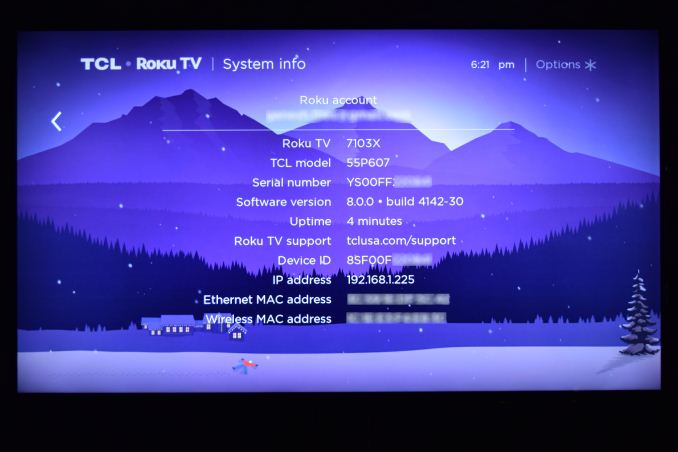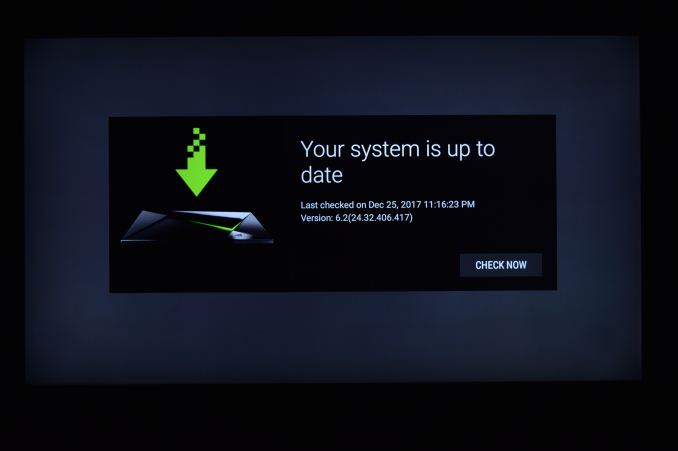A Budget Home Theater & PC Setup: 4K, HDR, UHD Blu-ray, and More
by Ganesh T S on December 26, 2017 8:30 AM ESTEvaluating Display Sources: HTPCs & CE Devices
Home Theater PCs used to be bulky versatile machines that had to support built-in TV tuners, a number of hard disks, as well as optical drives. However, the rising popularity of network TV tuners, network-attached storage (NAS) devices, and OTT streaming have resulted in the a transformation of the functionality that people expect from HTPCs. Simply put, a modern-day HTPC needs to be a flexible and versatile media player capable of handling a multitude of codecs and DRM requirements. The latter is not restricted to the handling of the encoded video. The display output also needs to be secure, while providing enough bandwidth and features to take full advantage of the capabilities of the downstream devices in the setup.
The average consumer often finds the 'it just works' nature of consumer electronic (CE) equipment such as the Roku streamers, game consoles, and standalone Blu-ray players to be attractive. However, for power users, the flexibility of HTPCs (such as the ability to support arcane subtitle formats or specific container features such as MKV chapters, or, even serve as a gaming machine) is simply too much to give up. Certain CE devices such as the NVIDIA SHIELD Android TV STB attempt to offer the best of both worlds. However, they are still closed platforms, and often do not have enough horsepower to fall back upon software decode for unsupported codecs.
Despite my predilection for HTPCs, I wanted to bring out the pros and cons of other closed solutions. Towards this, the evaluation of various options for media playback / display sources addresses the following aspects:
- HDR Support
- OTT Streaming (YouTube and Netflix)
- Local Media Playback (via USB)
- UHD Blu-ray Playback with HDR
The first candidate is the TCL 55P607's built-in Roku platform. Our tests were processed with the TV connected to the network using its wired 10 / 100 Mbps interface and Wi-Fi disabled. Firmware version 8.0.0 4142-30 was used.
The second solution in our evaluation set is one of the most popular Android TV STBs in the market - the NVIDIA SHIELD Android TV (SATV). Despite having launched back in 2015, the combination of high-end hardware and regular firmware updates have kept it at the top of the media player / Android TV STB market. Our tests were processed with the SHEILD connected to the network using its wired 1 Gbps interface and Wi-Fi disabled. Firmware version 6.2 was used.
The use of a RF remote / controller, combined with IP control using a smartphone app, mean that the SHIELD can be safely tucked away out of sight in a home theater setup.
Moving on to the HTPC front, we have three different PCs, with configurations and driver versions listed in the table below.
| Compact Home Theater PC Candidates - 2017 | |||
| PC | Zotac ZBOX MAGNUS EN1080K | ASRock Beebox-S 7200U | Intel NUC7i7BNHX1 |
| CPU | Intel Core i7-7700 | Intel Core i5-7200U | Intel Core i7-7567U |
| GPU | NVIDIA GTX 1080 (8GB GDDR5X) | Intel HD Graphics 620 | Intel Iris Graphics 650 |
| RAM | Corsair Vengeance 2x16GB DDR4-2667 SODIMM | Micron 16ATF1G64HZ 2x8GB DDR4-2133 SODIMM | Crucial Ballistix Sport LT 2x16GB DDR4-2400 SODIMM |
| Storage | Toshiba OCZ RD400 (512GB) | Kingston SSD Now V+ SNV325S2 (128GB) | Samsung SSD 840 EVO (500GB) + Intel Optane (16GB) |
| BIOS | 2K170814 | 1.73 | BNKBL357.86A.0054 |
| GPU Driver | 388.31 | 4877+ (beta) | 4877+ (beta) |
| Specifications | Zotac ZBOX MAGNUS EN1080K Specifications | ASRock Beebox-S 7200U Specifications | Intel NUC7i7BNHX1 Specifications |
| Pricing (NOT as configured) | USD 2000 (with 120GB SSD, 1TB HDD, 8GB RAM, and Windows 10) | USD 349 (Barebones) | USD 506 (Barebones) |
Note that we are using a beta driver from Intel that will be released to the public in January 2018. The reason behind the use of this driver will be apparent in our UHD Blu-ray Playback section.
Windows 10 Fall Creators Update was used as the OS for all the tests done using the above PCs. This version is critical for cutting-edge HTPC functionality, as it brings HDR desktop and media payback support into the stable release channel.













191 Comments
View All Comments
Kevin G - Wednesday, December 27, 2017 - link
In the market, it seems that 4K using HDMI 2.0 with HDCP 2.2 and HDR has finally settled things down after several years of turbulence. By my count we're at the five generation of consumer 4K/UHD. First we had the wave of 4K support only via HDMI 1.4/HDCP 1.4, then a half step with some HDMI 1.4/HDCP 2.0 displays which didn't see wide spread release as a new generation with HDMI 2.0/HDCP 2.0 was around the corner which could finally do 4k60. Then HDCP 2.2 came out making all the previous HDCP 2.0 displays incredibly short lived. Now we're seeing the advent of HDR being a standardized feature to go alongside 4k. All of this is over the course of 5 years. Finally have things settle down for 4K that getting content on the display as designed is not a headache as it has been in years past. Oh and 4K content is finally arriving with streaming services and 4K disc media.The problem with HDMI 2.1 is that there will likely be three generations of hardware that support. First wave, which will likely be shown off at CES 2018, will focus around higher frame rate transfer or higher resolution. As these devices start shipping in late 2018, there will likely be a new HDCP version to protect 8K content announced to make all the new displays only worthwhile as monitors for the first save of HDMI 2.1 video cards. Hooray for copy protection screwing over the consumer! Then I see another generation of displays accepting variable refresh rate as soon as Sony or MS update their console to support variable refresh rate. Ultimately a good thing gaming but it'll spur another round of obsolete hardware. Best time to adopt would be wait until 8K media has settled own on a distribution medium as once content becomes readily available, there is less incentive to change underlaying spec. That'll still be years away.
fallaha56 - Tuesday, December 26, 2017 - link
Also...Gemini Lake cannot do HDR because of ‘power contraints’ but an iPhone or Samsung can?Really? Or is this just intel at it again
lowphas - Wednesday, December 27, 2017 - link
A <75 usd android TV box can do 4k60fps hdr decode on paper. Usually they have a 5v2a power supply. But I dunno, never had one before.Tv sets are just a display panel and a small (maybe mobile?) soc in my eyes. There is virtually no power or thermal limitation inside a tv. (I have an mu7000 series tv)
So back to the intel cpu... I am just missing some point or it is not that demanding feature so in my opinion it can be maybe a price(ing)* constrain.
Mikzip - Tuesday, December 26, 2017 - link
Is it possible to get HDR out by means of USB C to HDMI adaptor, my HDMI port is only 1.4Kevin G - Wednesday, December 27, 2017 - link
Depends on the system but most USB-C ports that can provide video do so natively by DisplayPort and then convert that over to HDMI. So HDR output is possible because DP supports it but the DP to HDMI conversion chip plays a roll here too.So the short answer is yes but it may not be possible with all adapters.
Mikzip - Wednesday, December 27, 2017 - link
Do you know of any such adapter, the only one i have been able to lokate with HDR are only for the MacBook, and my USB C port don't have ThunderboltKevin G - Wednesday, December 27, 2017 - link
Not off hand that'd be guaranteed to work. Even if an adapter doesn't immediately work, you could try editing the system's EDID table to expose 10 bit color etc. and see what gets passed through. I strongly recommend this testing with a display that accepts HDR via both DP and HDMI so you could compare the results with and with the adapter as a factor.Mikzip - Wednesday, December 27, 2017 - link
I was trying to hook it up to my HDR TV LGB6, all HDMI inputs accept HDR. Editing EDID table are a little out of my league I'm afraid ;-)harshw - Tuesday, December 26, 2017 - link
The BIOS ver for the ASRock Beebox 7200-S is shown as 1.73. The version available for download from the website is 1.60. Was the 1.73 ver also a beta?And any idea of what the LSPCon version was? 1.66?
It's sad that the Intel HD graphics cannot do YCbCr 4:2:2 ...
Nestoritwiz - Tuesday, December 26, 2017 - link
Budget??Don't get me wrong I applaud your choices any of that stuff which I would love to own and it's a combination is a whole oh my God I'd be so happy.
But if the goal was to be on a budget or last three to five years without being update outdated then why would you use a DVD player of any kind three to five years come on we all know streaming is future DVDs are like VHS. Nvidia shield on sale for 149, T5 Samsung hard drive or some equivalent hundred bucks or less, ajisen air mouse remote 25 bucks. Get your home theater system 2 to 300. And you're good to go. Thank you for allowing me to express my thoughts I just think you missed the mark a little bit.
Happy holidays
Stephen